This module aims to provide generic means to model relations between
partners.
Examples would be ‘is sibling of’ or ‘is friend of’, but also ‘has
contract X with’ or ‘is assistant of’. This way, you can encode your
knowledge about your partners directly in your partner list.
Before being able to use relations, you’ll have define some first. Do
that in Contacts / Relations / Partner relations.

A relation type has a name for both sides.
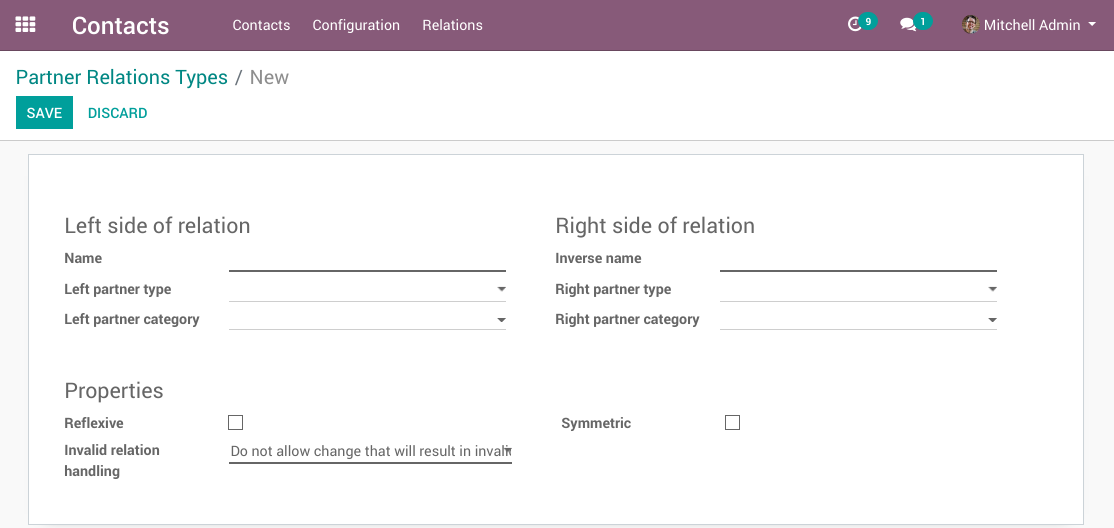
To have an assistant-relation, you would name one side ‘is assistant of’
and the other side ‘has assistant’.

The Partner Type fields allow to constrain what type of partners can be
used on the left and right sides of the relation.
- In the example above, the assistant-relation only makes sense between
people, so you would choose ‘Person’ for both partner types.

- For a relation ‘is a competitor of’, both sides would be companies.
- A relation ‘has worked for’ should have persons on the left side and
companies on the right side.
If you leave these fields empty, the relation is applicable to all types
of partners.
You may use categories (tags) to further specify the type of partners.
You could for example enforce the ‘is member of’ relation to accept only
companies with the label ‘Organization’ on the right side.
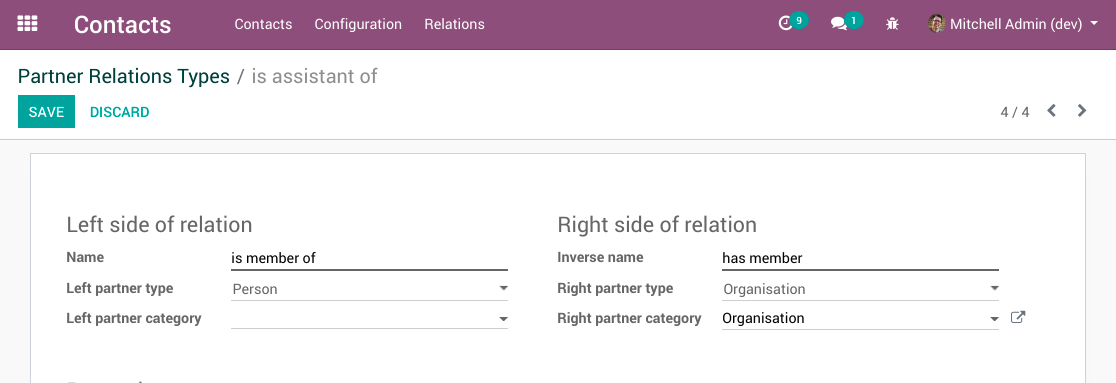
A reflexive relation type allows a partner to be in relation with
himself.
For example, the CEO of a company could be his own manager.
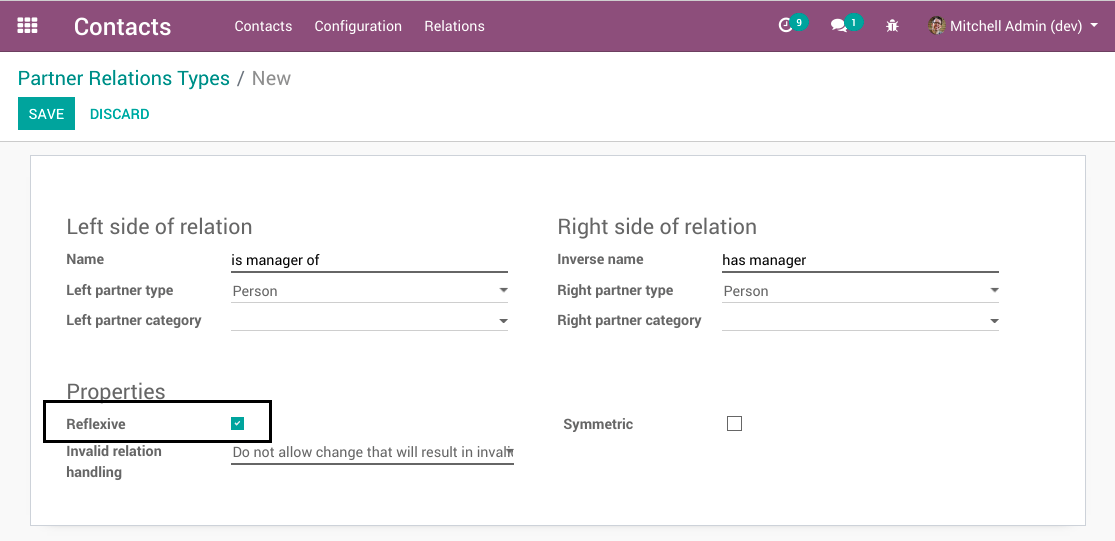
A symetric relation has the same value for the left and right sides.
For example, in a competitor relation, both companies are competitors of
each other.
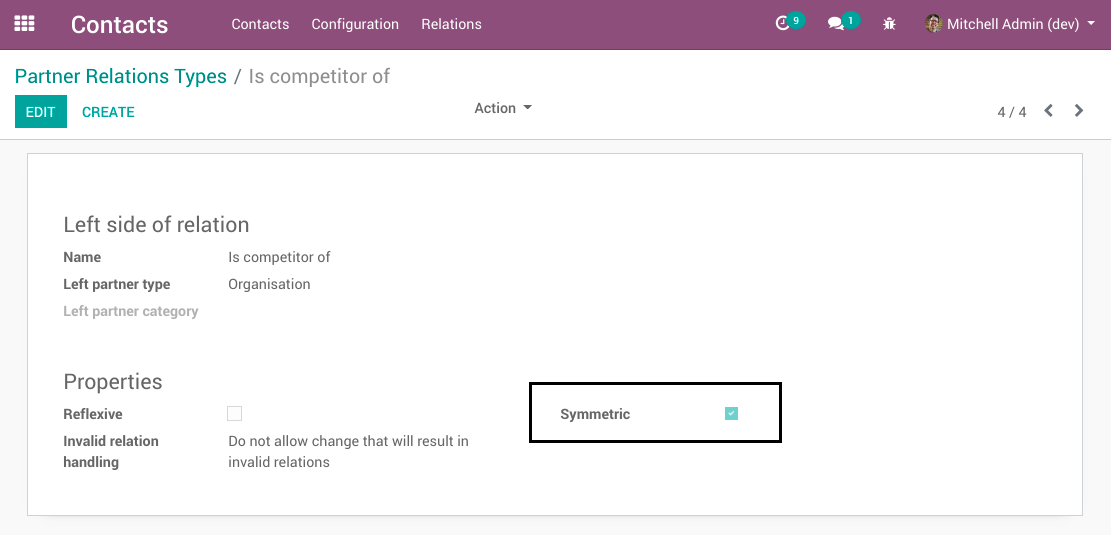
When the configuration of a relation type changes, some relations
between 2 partners may become invalid.
For example, if the left partner type is set to Person and a relation
already exists with a company on the right side, that relation becomes
invalid.
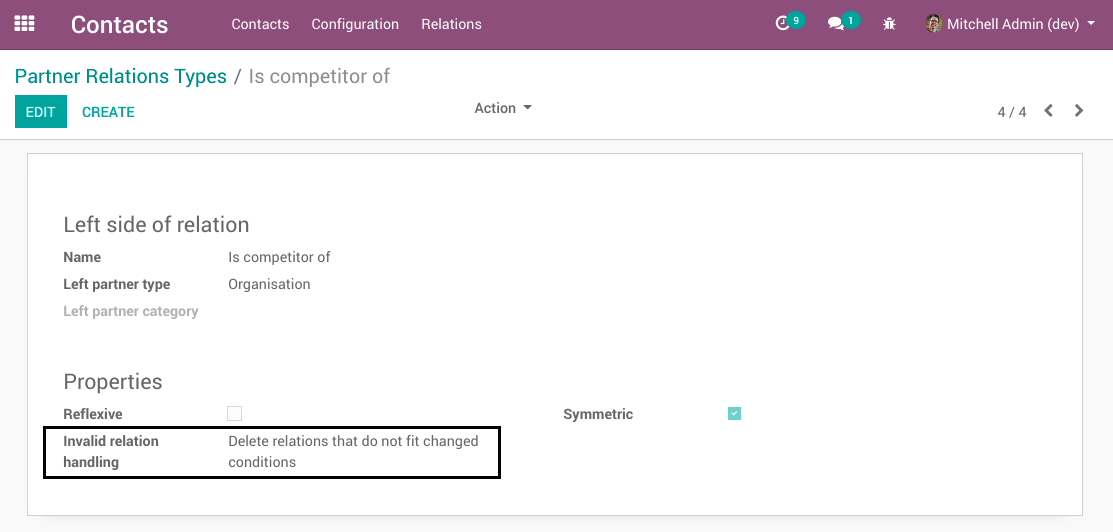
What happens with invalid relations is customizable on the relation
type.
4 possible behaviors are available:
- Do not allow change that will result in invalid relations
- Allow existing relations that do not fit changed conditions
- End relations per today, if they do not fit changed conditions
- Delete relations that do not fit changed conditions
To search for existing relations, go to Contacts / Relations /
Relations.

To find all assistants in your database, fill in ‘assistant’ and
autocomplete will propose to search for this type of relation.

Now if you want to find Colleen’s assistant, you fill in ‘Colleen’ and
one of the proposals is to search for partners having a relation with
Colleen.

A smart button is available on the partner form view to display the list
of relations.


Bugs are tracked on GitHub Issues.
In case of trouble, please check there if your issue has already been reported.
If you spotted it first, help us to smash it by providing a detailed and welcomed
feedback.
Do not contact contributors directly about support or help with technical issues.


















